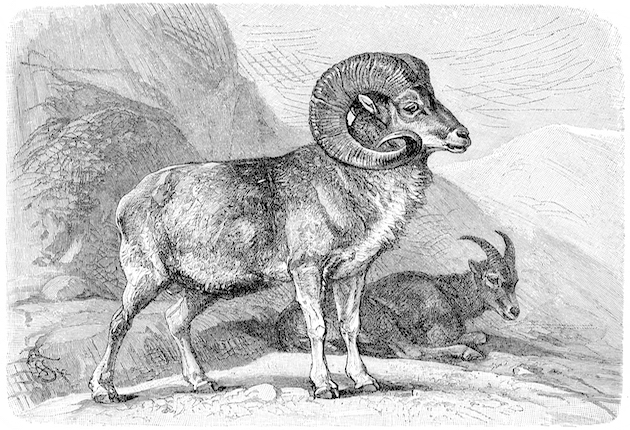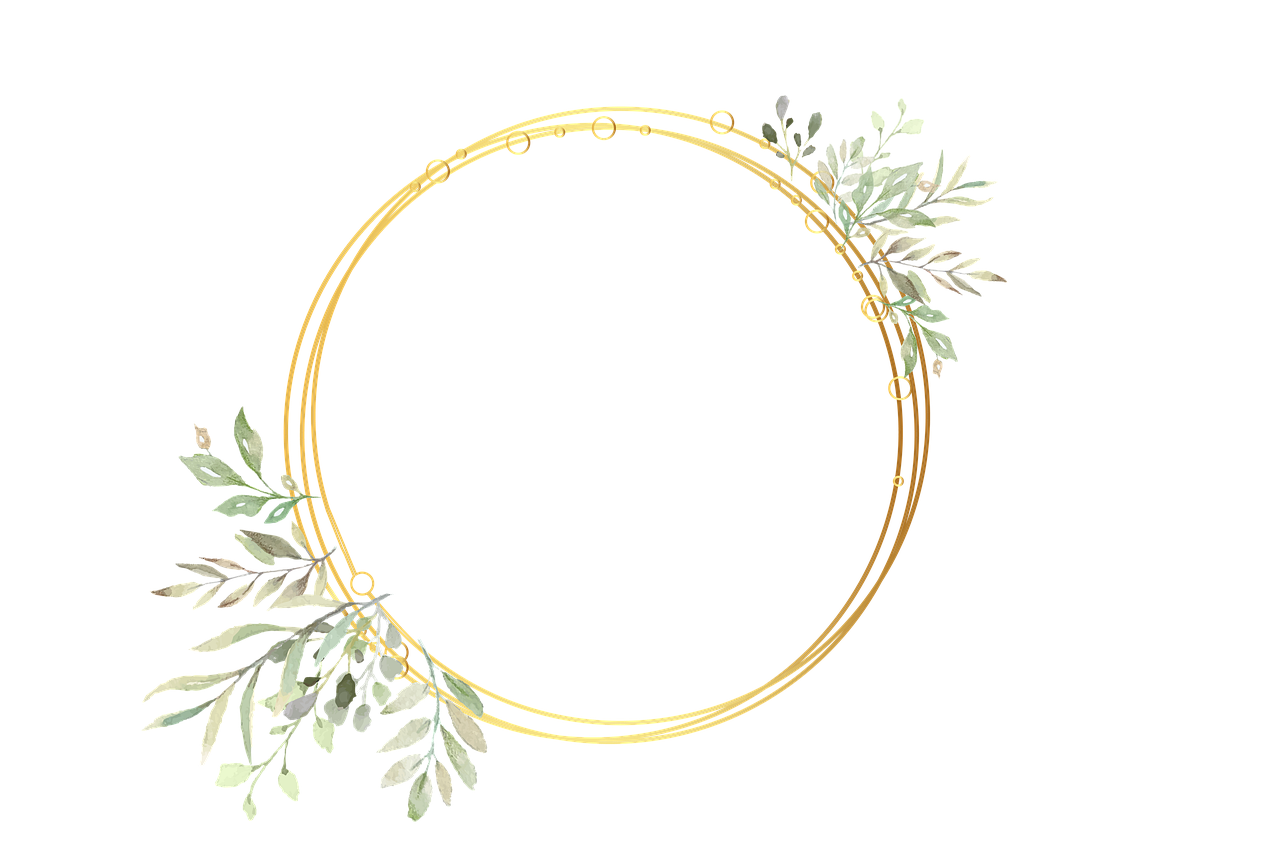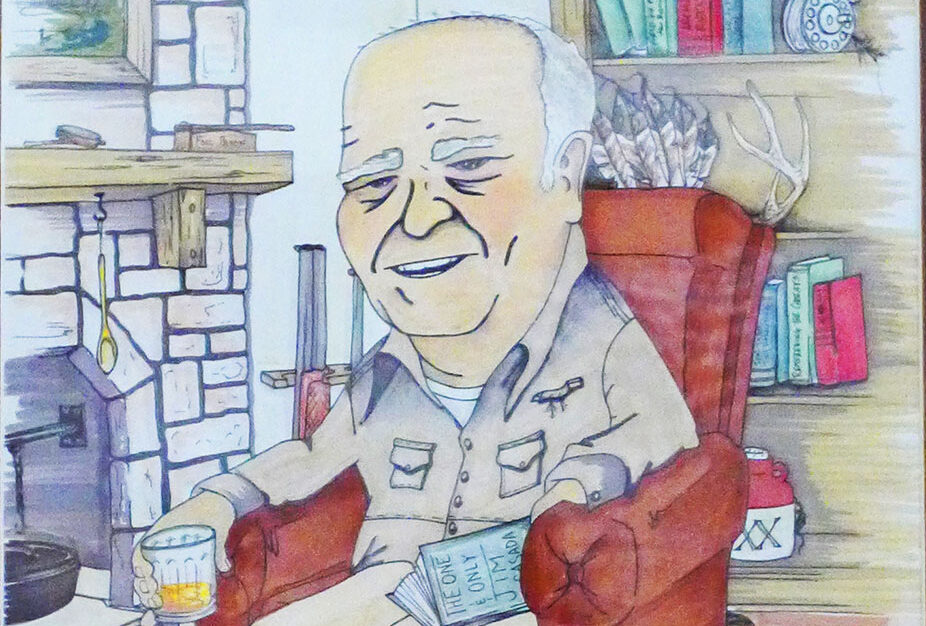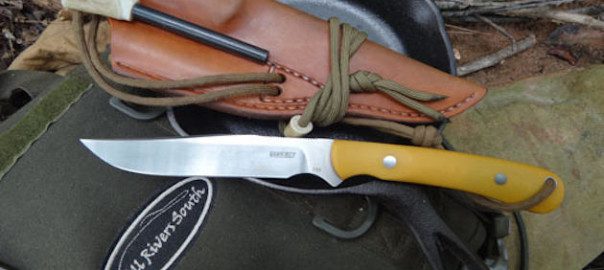Note: The following is an excerpt from E. Demidoff’s 1900 book of the same name. Minor edits were made to the original text, but the spirit of the piece is unchanged.
An hour’s scramble brought us, Taba and myself, to the top of the commanding ridge, from which a broad, stony tableland, gradually sloping away from us, extended for three or four miles. Here we sat down to spy. Presently, with the aid of my Zeiss glass, I made out a suspicious-looking brown speck, then another, then a third, till I could count 40 of them some two miles below us.
Sure enough, these were sheep at last, and very probably belonged to the herd Littledale had seen the day before. On more careful inspection, we found them to be all rams, lying on the plateau in open ground. We could not, from that distance, make out the size of their horns, but decided to approach them nearer, under shelter of the crags.
The wind was blowing steadily in our faces from the west, which was decidedly in our favor, but the question arose whether we should find any possible way of hiding ourselves on the flat tableland, over which we should have to crawl for at least 600 or 700 yards. We advanced under shelter of the rocks in very broken ground, having now and then to descend a steep gully, the cliffs in front of us being utterly inaccessible, then climb up again, and so on for a couple of hours till we reached the end of the ridge, from which we could distinguish the sheep quite plainly. Some of the rams carried magnificent horns, which served to encourage us on our somewhat daring enterprise.
We now crept down for some time, and presently found ourselves on the flat, grassy steppe upon which the animals were lying. Here we discovered that we could advance out of sight of them without having to crawl, there being a slight depression of the ground where they lay. If by chance one of them had stood up, we should immediately have been discovered. Taba led the way in a most confident manner, halting at places in order to look through the glass and see whether any bit of horn was visible; but no.
All went well for the next half-hour. Two or three hollows, of which we availed ourselves, came in very opportunely, and we soon found it necessary to crawl on all fours and continue the advance in this uncomfortable manner. We were now, as I thought, within range; but distances on the steppe are so deceiving that we continued in this way for more than another half-hour, moving on as cautiously as we could, without catching sight of the coveted horns.
At this stage, I deemed it advisable to leave Taba behind, lying flat on his stomach, and advanced alone, though still the grassy line in front of me was unbroken by any object overlooking it. I was gazing intently in front of me when suddenly I perceived a movement to my right, and there, within 40 yards, stood two or three rams quietly feeding up, and already almost between Taba and myself. This naturally spoiled my chance of picking out the largest, for they might at any moment get a whiff of my wind and be off; in fact, I was now almost in the midst of them.
Turning round, therefore, as cautiously as I could and ,cocking my rifle, I pointed it in their direction, with the intention of choosing my animal as they passed, or, at any rate, of getting my shot at the first alarm.
Suddenly one of them lifted his head up, another followed his example, and a third. They had evidently become suspicious, so nothing was to be done but to take my chance. One of them carried a very fair head, and as he was standing broadside-on, I let go at him and rolled him over; the others disappeared like lightning. Jumping up, I fired at a second as the herd streamed downhill, but the result was a clean miss. In the hustle I was unable to pick out another good head, and, firing at random, saw one sheep tumble over. When Taba came up they had already placed a mile between us and them.
My first ram proved to be a fairly good one, though the ends of his horns were, unluckily, broken. Their girth at base taped almost 20 inches; their length along the curve 45 inches. In the meantime heavy clouds had gathered, and the weather looked threatening, so we hurriedly gralloched the animal and started back with the intention of sending our Kalmuk with the pony to bring back the head and meat.
Rain now began pouring down in torrents, and before we had gone half a mile we found ourselves thoroughly drenched from head to foot; in fact, the rain never ceased for the rest of the day, and when we got down to the Lake Valley and found our ponies there was no question of sending the man after my booty.
We reached camp at about 6 p.m., none the worse for the dreadful soaking we had undergone, and found Littledale returned. He had seen only ewes on his ground, about 200 in number. Thus ended my second meeting with Kochkor. I had greatly enjoyed an exciting stalk, and had never before found myself so close to them.




